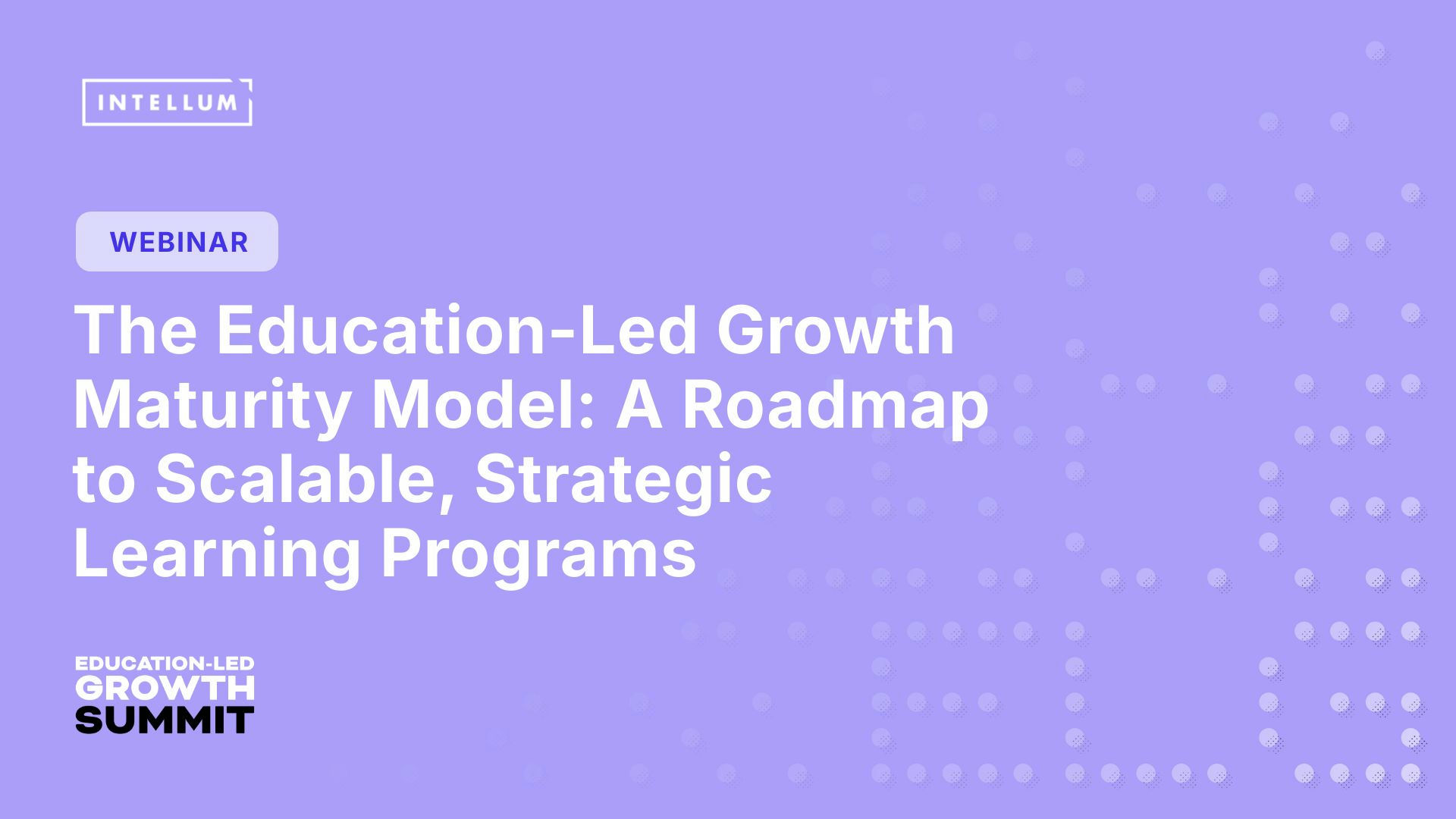In today’s competitive landscape, education isn't just a support function, it’s a growth strategy. That’s the central idea behind Education-Led Growth™ (ELG), a framework designed by Intellum to help organizations connect education efforts to business outcomes. But while the framework provides the what, many teams still struggle with the how—how do you know where you stand and what to do next?
That’s where the ELG Maturity Model comes in.
What Is the Education-Led Growth Maturity Model?
The ELG Maturity Model is a diagnostic tool built to help you evaluate your education program's maturity across seven core pillars of the Education-Led Growth framework:
- Business Outcomes
- Audience Strategy
- Initiative Strategy
- Delivery Strategy
- Marketing & Engagement
- Measurement & Optimization
- Resource & Governance Strategy
Each pillar is assessed across four stages of maturity:
- Ad Hoc: Something exists, but it’s reactive, inconsistent, and lacks strategic direction. Activities are usually isolated and uncoordinated.
- Foundational: The basics are in place with repeatable processes, but the strategy is still emerging. Efforts are becoming more intentional but aren’t yet data-driven or fully aligned with business goals.
- Strategic: Education is aligned with business priorities and driven by defined goals, learner needs, and operational plans. Programs are consistent, measurable, and optimized for performance.
- Transformational: Education is a core growth lever. The organization continuously innovates, personalizes at scale, and ties programs directly to business impact through data, automation, and advanced practices.

Unlike traditional maturity models that force you to categorize your entire program into a single stage, this model is unique: it recognizes that different parts of your program may be at varying levels of maturity. For instance, you might have a strategic delivery strategy but only a foundational approach to measurement.
Why It Was Created
The maturity model was developed after years of working with organizations that were eager to improve their education efforts but lacked a clear, actionable framework to assess and advance their strategies.
By giving education teams a way to evaluate each component of their program separately, the model helps avoid generic improvement plans and instead offers tailored, actionable next steps for each pillar.
How to Use It
There are two primary ways to engage with the ELG Maturity Model:
1. Self-Assessment
Start by reviewing the maturity model and reflecting on where your program stands across each of the seven pillars. For example:
- Are you tying education initiatives to real business outcomes?
- Have you segmented your audience and built learner personas?
- Are you measuring success beyond consumption metrics?
For each pillar, determine whether you're operating at an ad hoc, foundational, strategic, or transformational level.
2. Interactive Quiz
Intellum has developed an interactive tool that allows teams to answer a series of questions and receive an autogenerated report showing where they fall on the maturity spectrum for each pillar.
Based on your responses, the tool will:
- Place your program in the appropriate stage per pillar.
- Offer prescriptive next steps to level up.
- Serve recommended content to support your growth journey.
These resources are curated based on your stage, helping you move from confusion to clarity, and from reactive to strategic.
What to Do With Your Results
Once you know your maturity level in each pillar, it’s time to take action.
For every stage, the model outlines recommended next steps that help you grow in a structured, measurable way. For example, if your Measurement & Optimization strategy is at the “foundational” level, your next step might be to define KPIs aligned with business goals or set up baseline reporting infrastructure.
Even better? The model connects you to content and resources—like blog posts, guides, and webinars—that help you move forward faster.
Make It a Habit: Reassess Every 6–12 Months
Your education program is dynamic. As your business evolves, so will your priorities, challenges, and team structure. That’s why the ELG Maturity Model is designed to be an ongoing diagnostic, not a one-time checklist.
We recommend reassessing every 6–12 months to:
- Track your progress.
- Identify areas where you’ve regressed (it happens!).
- Adjust your focus based on what your business needs now.
This regular check-in keeps your education efforts aligned, intentional, and impactful.
Ready to See Where You Stand?
The ELG Maturity Model is more than a scorecard—it’s a roadmap for growth. Whether you’re just getting started or pushing toward transformation, this tool will help you focus your efforts, align your team, and drive the business outcomes that matter.
Take the Education-Led Growth Maturity Assessment
Let’s level up—one pillar at a time.




.png)

